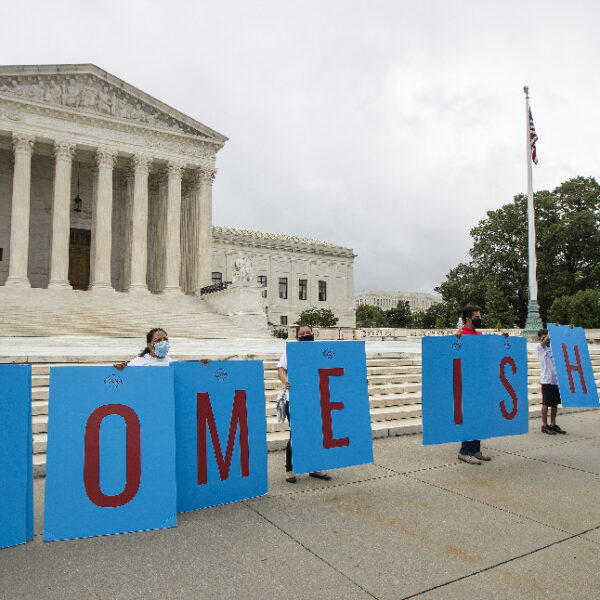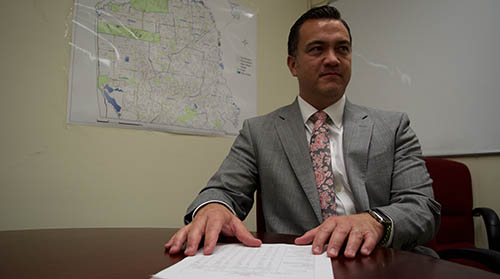On April 1, 2023, states will resume reviewing all 86.7 million Medicaid enrollees’ eligibility for the first time since the pandemic started and will begin ending coverage for those found ineligible. This process is called “unwinding” and, according to estimates, it could result in up to 15 million people leaving the program.
Eligible individuals and families — particularly people of color and children — are at risk of losing coverage during the unwinding process despite remaining eligible for Medicaid or becoming eligible for other types of low-cost coverage, due to administrative hurdles they must overcome to maintain their coverage.
EMS teamed up with the Center for Budget and Policy Priorities (CBPP) and an expert from The Children’s Partnership, based in California to bring this topic to the attention of audiences and to explain how to avoid losing badly needed coverage.
Farah Erzouki, she/her, Senior Policy Analyst, Center on Budget and Policy Priorities gave an overview on the issue termed the Medicaid unwinding:
As you may know, a pandemic furlough in many states gave people coverage during the pandemic, but that provision is ending on March 31st, and states can soon begin resuming their regular renewal process and terminate coverage for Medicaid enrollees beginning on April 1st. This is the process termed unwinding. Medicaid unwinding will be the largest healthcare event since the implementation of the Affordable Care Act and experts estimate that over 18 million people could lose their Medicaid coverage despite millions still being eligible. The risk of coverage loss is particularly high for communities of color and children.
QUESTION: What will this process going to look like, what are the stakes, and what can states and enrollees do today to minimize coverage losses?
ANSWER: Since March of 2020 for covid legislation, states have mostly kept people covered through Medicaid without interruption in exchange for an increase in their Medicaid Federal matching funds. This policy known as The Continuous Coverage Requirement allowed millions of people to keep their Medicaid during the Public Health crisis and not be subject to paperwork requirements or other administrative barriers that usually result in people turning on and off the program. Enrollment in Medicaid has grown by over 30% to nearly 84 million people since February 2020. Access to coverage and Healthcare Services has been critical during this time of increased hardship. At the same time, this continuous coverage policy has meant that most Medicaid enrollees probably have not had contact with their Medicaid agencies in three years and in some cases even longer. People have moved during the course of the pandemic. This poses a risk during the unwinding process that people may not receive their renewal notice or important information in the mail and if they do they may not understand it or might struggle to submit the information on time. These challenges will be made even more difficult with the Staffing crisis that Medicaid agencies are facing all while preparing to manage the historically high caseloads ahead of them. Medicaid agencies could fall behind in processing cases and documents and all of these challenges combined could result in large coverage losses. Experts estimate that 18 million people will lose their Medicaid coverage during the unwinding process with 7 million of them still being eligible but losing coverage for procedural reasons such as the ones I touched on such as not receiving or submitting paperwork on time, not being able to get a hold of their Medicaid offices among many others. And that risk is particularly high for children and people of color. We know that procedural barriers or the red tape that people experience in trying to access Medicaid have deep roots in systemic racism. People of color are disproportionately impacted by these procedural barriers and this makes it more difficult for them to enroll and stay enrolled in safety net programs like Medicaid despite being eligible research predicts that while 17% of white enrollees will lose coverage during the unwinding for procedural reasons, Latino, Asian, Native Hawaiian, Pacific Islander, and black enrollees are much more likely to lose coverage for those reasons, 64%, 50% and almost 40% respectively. Additionally, almost 3 in 4 children are predicted to lose coverage despite being eligible. These Stark numbers underscore the inequities that communities and children experience and the need for an all-hands-on-deck effort to support these impacted populations through the unwinding process. The year-end Congressional spending bill that was passed in December set a date certain for the end of this pandemic policy, it ends on March 31st of this year which is in Policy it ends on March 31st of this year which isn’t just over 60 days this means that enrollees could begin losing their coverage as early as April 1st. Every state will have its own approach and timeline for processing its historically high caseloads and starting its case renewals and it takes States anywhere from 60 to 90 days to complete a full renewal. Some states will initiate renewals as soon as February meaning that some enrollees will start receiving notices in the mail about their coverage as soon as next month but other states won’t begin initiating their renewal process until April so we will see drops in coverage in those states starting to happen closer to over the summer when they process their full caseloads. So this will be a long process that will happen through the rest of 2023 and well into 2024.
Even though the stakes are high and the timeline is inching closer by the day the good news is that coverage loss is not inevitable. State agencies can and must act now to endure that eligible communities have the information they need to stay covered and that people who are not eligible for Medicaid anymore can transition to another form of coverage. States can also use this opportunity to make improvements to their own processes, reduce red tape and make it easier for people to renew their coverage and such improvements will have long-term benefits. One of the main things a state agency can do is to make sure they are communicating effectively with Medicaid enrollees. To do this agencies should work to make sure they have updated enrollee contact information so that when notices start to come in the mail people receive them and know it’s time to take action. They should also use different methods to contact people like text messages and email especially given it may be more difficult than usual to reach them. Partnering with community-based groups and trusted partners is also critical to communicate messages to people on the ground including communities of color and immigrant populations about the need to renew coverage or to help them to transition to other types of coverage in the marketplace.
We know that Medicaid agencies are facing a staffing crisis and there are strategies that states can employ that would simplify the renewal process and reduce the strain on the workforce. State agencies should automate more renewals using electronic data so they don’t have to contact every single enrollee directly to renew their coverage. This would reduce procedural errors and would also ease the strain on caseworkers. They should also make sure that people can renew their coverage online or over the phone. This is a federal requirement but some states have yet to implement it and they should find ways to address their staffing shortages by hiring more workers, allowing overtime, or bringing back retirees. These fixes are worth investing energy into even if they aren’t ready right when the unwinding process begins. The stakes are high with the coverage of millions of people on the line and proven solutions at their disposal state agencies must act to make this process smooth and effective to protect enrollees and minimize coverage losses throughout the unwinding process.
QUESTION: What messages do communities need to hear now to prepare for the unwinding?
ANSWER: Laura Guerra-Cardus, she/her, Director of State Medicaid Strategy
There is a lot that states can do and need to do to prepare for the unwinding so that eligible people do not lose coverage and state across the country will do a variety of quality jobs. Their work in this area will vary from state to state. It is critical that in addition to urging state leaders and state agencies to do all they can that we also do all we can to make sure that communities of color have the information they need to protect their coverage and their families’ coverage. And the care and financial protections that come with it. So the key messages that we collectively need to get the families are summarized as follows:
- People need to update their contact information. Let those in Medicaid know that they will once again need to do the eligibility renewal process for Medicaid or risk losing coverage. And that they need to make sure that their Medicaid agency has updated contact information for them.
- Check their mail Let people know that they need to make sure to check their mail and keep an eye out for letters from either Medicaid or CHIP. Let them know that they could receive their renewal notifications at some point this year Air or early next year because remember States will have about a year to initiate the renewals and so people could be on the earlier side of the renewal process or on the later side so they should be alert to this the rest of this year and early next year.
- Complete their renewal if they get one. let them know to complete the renewal form If they get one for those that no longer qualify for Medicaid let them know that they may be able to get affordable coverage through the Affordable Care Act Marketplace and learn more by visiting healthcare.gov.
Medicaid Non-Expansion States
What the unwinding experience will look like in Expansion States versus Non -Expansion States
Those that have expanded Medicaid to low-income adults and those that have not as Medicaid enrollees go through this redetermination. In expansion States, the majority of those going through the redetermination will have an affordable coverage option available to them no matter their new income or circumstance.
However, in the 11 non-expansion states that remain, hundreds of thousands of people stand to lose their Medicaid coverage with no other affordable coverage option available to them. Those most likely to fall into what we call the Medicaid Coverage Gap where they don’t qualify for their states’ Medicaid Program but do not burn enough money to get financial assistance on the marketplace are the following groups:
- Young adults who turned 19 during the pandemic and who no longer qualify for children’s overage.
- Parents with extremely low income either no longer have a dependent child or their income has risen above the very low threshold the states have.
- Postpartum people who are past their state’s eligibility which could be anywhere from 60 days to 12 months after the end of pregnancy. In the non-expansion states for these groups to avoid falling into the Medicaid coverage Gap often their income needs to rise significantly for example, a Texas mom would have to see her income rise six times from 3,700 to 23,000 to afford to be able to get an affordable coverage option in the marketplace. The Medicaid coverage Gap disproportionately impacts people of color. People of color make up 60% of people in the Gap reflecting systemic racism embedded in our nation’s education, economic and other systems that have made communities of color disproportionately likely to have lower incomes. With the potential for massive coverage loss ahead of us, now is the time for State policymakers to ensure their states use every means available to avoid massive coverage loss when the unwinding begins. This includes doing what they can to streamline the renewal process and ensure that eligible people remain enrolled and it also means expanding Medicaid so that the people of their state can access Affordable Health Care coverage no matter their income.
QUESTION:
What is the effect on children and what’s going to happen in states like California that are Expansion States that still will probably struggle?
ANSWER: Kristen Testa, D Director, Director, California Health Programs, Children Partnership
This really is an all-hands-on-deck situation in the sense that this is going to affect churches, synagogues, schools, small businesses, businesses, and health plans. Communities across the country are going to be affected even if you personally are not covered by Medical. In California the numbers are just so very clear, we have 50 million people covered by Medical. In California, that’s 1/3 of all Californians and part of this is because we have done the great work of covering all, we cover all regardless of immigration status and that’s one-third of our population that used this as insurance.
For children, over half of all California children have coverage through Medical so this unwinding will have a tremendous effect on all those families. Every single one of them is going to have to renew. The numbers you heard about how there are those that will lose coverage what is important to recognize is that so many of them are still going to be eligible. The only reason they’re losing is that they got tripped up in the paperwork, they may have moved and changed their address and never got the renewal form, they were unclear and confused. The important thing is for everybody to know and help our community renew their coverage, and know where to go in their County offices that renew applications for Medi-Cal there are also Community organizations that can help families with their renewal and these are going to be very important to connect families to make sure they can renew their coverage. California is trying to do its best to get the word out but there will be clogged lines calling in and trying to get a change of address included. So continuous coverage is something that we value very much and in California this past budget year in July we passed a law that would continue continuous coverage for young children because at this time in their lives when 90% of brain development is happening. We want to make sure they have no gaps in coverage, and that they continue their coverage during this period. Unfortunately, the continuous coverage policy in California won’t begin until 2025, not in time for this unwinding so some children will lose coverage in the meantime we are pushing our state to implement that permanent policy for young children as soon as possible.









